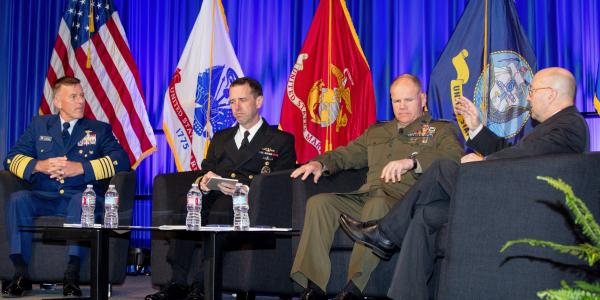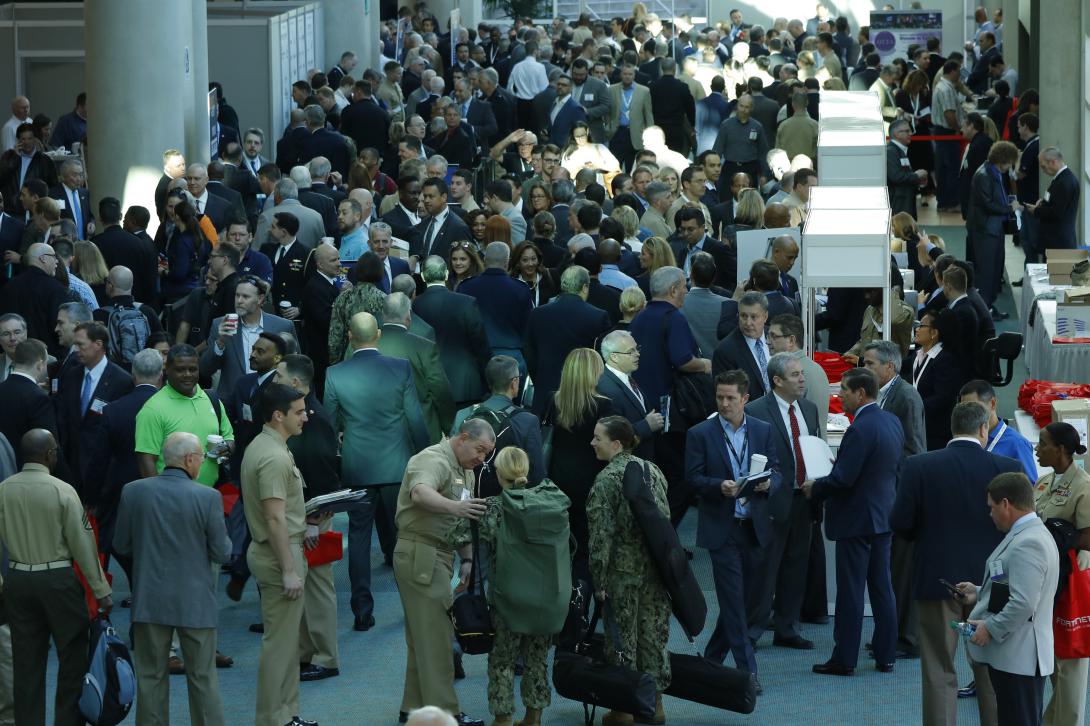Cyber Tops List of Looming National Security Threats
The gravest national security threat to the United States is a product of its own making.
By far, concerns emanating from the cyber domain outrank conventional conflict hazards posed by the Chinas, Irans, North Koreas or Russias of the world, military leaders said in February during West 2017 in San Diego.
Cybersecurity no longer can be viewed as a technology-only problem and segmented into stovepipes where the Defense Department carries out one set of tasks and the civilian government another, while industry does its own thing, said Adm. Michael Rogers, USN, director of the National Security Agency (NSA) and commander of U.S. Cyber Command. “It must be viewed more broadly and must be tackled from a national security perspective,” Adm. Rogers said during the conference, co-sponsored by AFCEA International and the U.S. Naval Institute.
Though cyber is a relatively new addition to the warfighting domains, commanders can rely on conventional warfare blueprints to carry out some cyber missions, he offered during a frank discussion with Adm. James Stavridis, USN (Ret.), former NATO commander and now dean of Tufts University’s Fletcher School of Law and Diplomacy. “Cyber is an operational domain in which we do a variety of missions and functions, many of which are very traditional,” Adm. Rogers said. “We do reconnaissance; we do fires; we do maneuvers. The same things I was used to as a surface [warfare] officer … I’m constantly going back to that.”
Technology might offer solutions to cyberthreats or at least let the United States gain the upper hand over adversaries, shared Adm. Harry Harris, USN, commander of U.S. Pacific Command. Government and industry, as a team, must move beyond linear thinking and embrace disruptive solutions such as artificial intelligence, automation and collaboration between people and computers—what he called man-machine teaming—to incite exponential thinking. “Innovate or die,” Adm. Harris said. “Hope is not a strategy, and that is why everyone in this room must act now.”
Unlike in the conventional warfare realm, the lack of physical and geographic boundaries in cyberspace test modern warfighting doctrine, panelists offered during a discussion on how to define and carry out information warfare. Each of the services struggles to integrate information warfare capabilities, said Vice Adm. Jan Tighe, USN, deputy chief of naval operations for information warfare and director of naval intelligence. “Central to our ideas about battlespace awareness, assured command and control and integrated fires is the idea of maneuvering,” Adm. Tighe said. “It’s not a static situation. We’ve got to be able to maneuver in the electromagnetic spectrum when faced with an adversary. We’ve got to be able to maneuver within cyberspace. For some folks, the notion of maneuvering in a network or maneuvering in the electromagnetic spectrum is kind of a new idea. But that has been built into the way forces and fleet operations are working to ... take full advantage of the spectrum and take it to the fight.”
Senior leaders from the Navy, Marine Corps and Coast Guard highlighted additional key concerns during the three-day conference. After 16 years of running counterinsurgency operations in Afghanistan and Iraq, forces are strained by the high operational tempo, depleted funds and wear and tear on equipment, they shared. This could preclude successful warfare against more advanced adversaries such as Russia or China.
“We, frankly, have not been in competition for 20 to 25 years,” said Adm. John Richardson, USN, chief of naval operations. “That’s a long offseason. And all of those offseason habits—the crew has gained weight, slowed down. We have got to get ... fit to fight and be ready for this competition for sea control that will enable all those things we expect our Navy to do.”
The effects of the strain on the sea services are not always obvious to the public, largely because the forces that operate at the tip of the spear—those deploying for global operations—tend to get first crack at the funding stream to maintain fleet readiness, said Adm. Philip Davidson, USN, commander of U.S. Fleet Forces Command. “But we’re taking risks in surge and maintenance and modernization to make that happen,” Adm. Davidson said. “When [force generation] is fully resourced and properly executed, in terms of policies and practices, it works great. When it’s not, that’s a different problem. And we chose to take risks in some areas in that force generation.”
If the Trump administration comes through on a recent proposal to increase military spending by $54 billion, the first of the extra dollars will restore readiness and much-needed modernization efforts, the service leaders agreed.
“We’ve been fighting for 16 years, and our stuff got old,” stated Gen. Robert Neller, USMC, commandant of the Marine Corps.
For full event coverage, including videos, photos and presentations, are available online.







Comments